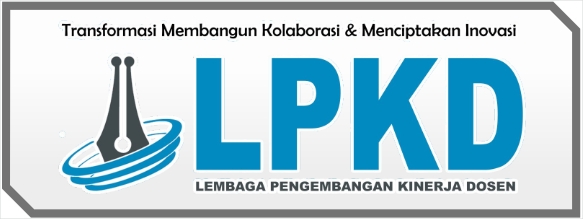Prosedur Coronary Angiography (CAG) Pada Pasien Dengan Kasus Mitral Stenosis (MS) Severe
DOI:
https://doi.org/10.55606/innovation.v2i1.2142Keywords:
Coronary Angiography (CAG), Severe Mitral Stenosis (MS).Abstract
Mitral stenosis (MS) is a heart valve disorder in which the mitral valve (located between the left atrium and left ventricle) becomes narrowed or hardened, blocking blood flow from the left atrium to the left ventricle. Coronary angiography (CAG) is an invasive diagnostic technique used to evaluate the condition of the coronary blood vessels in patients with acute transmural myocardial infarction (MI). Coronary Angiography (CAG) examination in cases of Severe Mitral Stenosis (MS) Severe involves patient preparation, equipment preparation, medical team, examination procedures, post-action care, description of examination results, and its role in the management of Severe (MS) Patient preparation involves patient education about procedures, fasting before examination, renal function checks, medication adjustments, vascular access preparation, discussion of contrast agents, and vital monitoring. Narrowing of the heart's mitral valve is a pathological condition in which this narrowing inhibits blood flow from the left atrium to the left ventricle. Coronary angiography (CAG) plays an important role in clinical evaluation and therapeutic planning.
Background: Mitral stenosis (MS) is a heart valve disorder in which the mitral valve (located between the left atrium and left ventricle) becomes narrowed or hardened, blocking blood flow from the left atrium to the left ventricle. This can increase pressure in the left atrium and reduce the amount of blood pumped throughout the body. Because MS is associated with increased left atrial pressure and can affect overall cardiac hemodynamics, it is important to understand how this condition may interact with coronary artery pathology. This research method is a literature review study, where literature exploration is carried out in various databases with keywords such as Coronary Angiography, Severe Mitral Stenosis Cases.
Results: Coronary Angiography (CAG) examination in cases of Severe Mitral Stenosis (MS) Severe involves patient preparation, equipment preparation, medical team, examination procedures, post-action care, description of examination results, and their role in the management of (MS) Severe Patient preparation involves patient education about the procedure, fasting before examination, renal function testing, medication adjustments, vascular access preparation, discussion of contrast agents, and vital monitoring. Severe (MS) patients require special attention in this preparation. Equipment preparation includes a stable catheterization table, a fluoroscopic imaging system, various types of catheters, appropriate contrast agents, resuscitation equipment, pre-procedure medications, and hemostasis equipment. The medical team involved in CAG examination in Severe (MS) patients involves an interventional cardiologist, radiological technologist, catheterization nurse, catheterization technician, and additional support personnel such as the anesthesia team and resuscitation team. The examination procedure includes patient preparation, vascular access, catheter insertion into the coronary arteries, evaluation and imaging of the coronary arteries, and completion of the procedure. CAG examination has an important role in the detection of coronary artery disease. CAG examination in patients with (MS) Severe requires careful preparation and involves the collaboration of a well-coordinated medical team to provide optimal results and a significant contribution in the management of (MS) Severe.
Conclusion: Narrowing of the mitral valve, severe mitral stenosis (MS) is a pathological condition where this narrowing inhibits blood flow from the left atrium to the left ventricle. This condition is most often caused by rheumatic heart disease, which results in inflammation and ultimately thickening and narrowing of the mitral valve. Coronary Angiography (CAG) examination in Severe Mitral Stenosis (MS) cases has an important role in detecting coronary artery disease.
References
O'Gara, P.T., Kushner, F.G., Ascheim, D.D., et al. (2013). 2013 ACCF/AHA Guideline for the Management of ST-Elevation Myocardial Infarction: A Report of the American College of Cardiology Foundation/American Heart Association Task Force on Practice Guidelines. Journal of the American College of Cardiology, 61(4), e78-e140.
Antman, E. M., Anbe, D. T., Armstrong, P. W., Bates, E. R., Green, L. A., Hand, M., ... & Fuster, V. (2004). ACC/AHA guidelines for the management of patients with ST-elevation myocardial infarction—executive summary: a report of the American College of Cardiology/American Heart Association Task Force on Practice Guidelines (Writing Committee to Revise the 1999 Guidelines for the Management of Patients with Acute Myocardial Infarction). Circulation, 110(5), 588-636.
Levine, G. N., Bates, E. R., Blankenship, J. C., Bailey, S. R., Bittl, J. A., Cercek, B., ... & Halperin, J. L. (2016). 2015 ACC/AHA/SCAI focused update on primary percutaneous coronary intervention for patients with ST-elevation myocardial infarction: an update of the 2011 ACCF/AHA/SCAI guideline for percutaneous coronary intervention and the 2013 ACCF/AHA guideline for the management of ST-elevation myocardial infarction: a report of the American College of Cardiology/American Heart Association Task Force on Clinical Practice Guidelines and the Society for Cardiovascular Angiography and Interventions. Circulation, 133(11), 1135-1147.
Amsterdam, E. A., Wenger, N. K., Brindis, R. G., Casey Jr, D. E., Ganiats, T. G., Holmes Jr, D. R., ... & Yancy, C. W. (2014). 2014 AHA/ACC guideline for the management of patients with non–ST-elevation acute coronary syndromes: a report of the American College of Cardiology/American Heart Association Task Force on Practice Guidelines. Journal of the American College of Cardiology, 64(24), e139-e228.
Benjamin, E. J., Muntner, P., Alonso, A., Bittencourt, M. S., Callaway, C. W., Carson, A. P., Chamberlain, A. M., Chang, A. R., Cheng, S., Das, S. R., Delling, F. N., Djousse, L., Elkind, M. S. V, Ferguson, J. F., Fornage, M., Jordan, L. C., Khan, S. S., Kissela, B. M., Knutson, K. L., … Virani, S. S. (2019). Heart Disease and Stroke Statistics-2019 Update: A Report From the American Heart Association. Circulation, 139(10), e56–e528. https://doi.org/10.1161/CIR.0000000000000659
Braunwald, E. (n.d.).
Delgado, V., Tops, L. F., Schuijf, J. D., de Roos, A., Brugada, J., Schalij, M. J., Thomas, J. D., & Bax, J. J. (2009). Assessment of mitral valve anatomy and geometry with multislice computed tomography. JACC. Cardiovascular Imaging, 2(5), 556–565. https://doi.org/10.1016/j.jcmg.2008.12.025
Ghobrial, M., Haley, H. A., Gosling, R., Rammohan, V., Lawford, P. V., Hose, D. R., Gunn, J. P., & Morris, P. D. (2021). The new role of diagnostic angiography in coronary physiological assessment. Heart, 107(10), 783–789. https://doi.org/10.1136/heartjnl-2020-318289
Maganti, K., Rigolin, V. H., Sarano, M. E., & Bonow, R. O. (2010). Valvular heart disease: diagnosis and management. Mayo Clinic Proceedings, 85(5), 483–500. https://doi.org/10.4065/mcp.2009.0706
Nishimura, R. A., Otto, C. M., Bonow, R. O., Carabello, B. A., Erwin, J. P. 3rd, Guyton, R. A., O’Gara, P. T., Ruiz, C. E., Skubas, N. J., Sorajja, P., Sundt, T. M. 3rd, & Thomas, J. D. (2014). 2014 AHA/ACC Guideline for the Management of Patients With Valvular Heart Disease: executive summary: a report of the American College of Cardiology/American Heart Association Task Force on Practice Guidelines. Circulation, 129(23), 2440–2492. https://doi.org/10.1161/CIR.0000000000000029
Otto, C. M., & Prendergast, B. (2014). Aortic-valve stenosis--from patients at risk to severe valve obstruction. The New England Journal of Medicine, 371(8), 744–756. https://doi.org/10.1056/NEJMra1313875
Rokey, R., Kuo, L. C., Zoghbi, W. A., Limacher, M. C., & Quinones, M. A. (1985). Determination of parameters of left ventricular diastolic filling with pulsed Doppler echocardiography: comparison with cineangiography. Circulation, 71(3), 543–550. https://doi.org/10.1161/01.cir.71.3.543
Tavakol, M., Ashraf, S., & Brener, S. J. (2012). Risks and complications of coronary angiography: a comprehensive review. Global Journal of Health Science, 4(1), 65–93. https://doi.org/10.5539/gjhs.v4n1p65
Zoghbi, W. A., Adams, D., Bonow, R. O., Enriquez-Sarano, M., Foster, E., Grayburn, P. A., Hahn, R. T., Han, Y., Hung, J., Lang, R. M., Little, S. H., Shah, D. J., Shernan, S., Thavendiranathan, P., Thomas, J. D., & Weissman, N. J. (2017). Recommendations for Noninvasive Evaluation of Native Valvular Regurgitation: A Report from the American Society of Echocardiography Developed in Collaboration with the Society for Cardiovascular Magnetic Resonance. Journal of the American Society of Echocardiography : Official Publication of the American Society of Echocardiography, 30(4), 303–371. https://doi.org/10.1016/j.echo.2017.01.007
Downloads
Published
How to Cite
Issue
Section
License
Copyright (c) 2023 Journal of Educational Innovation and Public Health

This work is licensed under a Creative Commons Attribution-ShareAlike 4.0 International License.



















